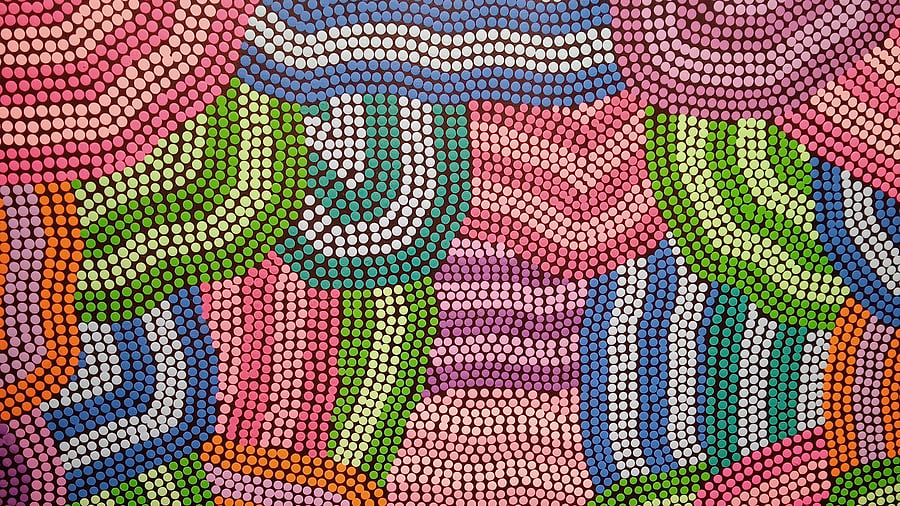
A traditional dot painting.
Credit: Special Arrangement
For many enthusiasts of art who encounter Aboriginal art in Australia, the initial impression is often that it is too simplistic and raw. Yet, such a view barely scratches the surface. Aboriginal art, in truth, reflects a visual language of its own. The art speaks about the environment in which it is born, the land, the collective memory of its practitioners and spirituality. It is also a medium for passing down messages, knowledge, survival skills and lessons.
Over generations, despite the onslaught of modernity, Aboriginal artists have adapted to new contexts while adhering firmly to their roots. Artists have evolved using modern art materials and synthetic colours, replacing natural dyes and materials. However, each artistic work remains aligned to its heritage, personal history and ancestry. It is for this reason that authentic art can only come from the Aboriginals, although it may seem easy to imitate their art. Symbolism is essential to this tradition.
Aboriginal art speaks of its affiliation to each tribe, the myriad ceremonies, and folk stories, each carrying layers of meaning. They are not just decorative pieces, although they may look good in a modern drawing room. The themes include fishing, hunting, gathering and family life.
Among the many Aboriginal art styles, dot painting is one of the most well-known. Aboriginal communities, which historically had no written language, used dots as a visual storytelling method. These patterns convey sacred ancestral beings, the relationship between people and the land, and complex cultural knowledge.
The dot patterns, one of the dominant elements in Aboriginal art, represent the spiritual world and sacred ideas and nature — animals, plants and water bodies — by the very arrangement of the dots in terms of spacing, intensity and design. Aboriginal art also serves as maps of the land, which travel writer Bruce Chatwin describes as “Songlines” in a book of the same name.
Today’s Aboriginal artists not only preserve traditional storytelling but also engage with contemporary issues. For instance, bushfires, a common occurrence in Victoria, have been the theme of an Aboriginal artist, Molly Tjami. Her painting, Waru (Fire), reflects on the devastating bushfires of February 2009.
Contemporary Aboriginal artists have expanded into installation and sculptural art, building upon traditional techniques such as wood carving and fibre weaving. Kim Wandin’s bronze sculpture, Luk Bagurrk Gunga (Eel Woman Catch), 2023, commissioned by the National Gallery of Victoria (NGV), pays tribute to Wurundjeri women and their matrilineal weaving traditions. It symbolises their relationship with the short-finned eel (luk), whose migratory paths now traverse underground waterways in Naarm (Melbourne). Cast from a woven form, this eight-metre-long sculpture conveys fluidity and motion, capturing the essence of a traditional fishing tool vital to the Wurundjeri culture. Aboriginal art, at least in the State of Victoria, has slowly and steadily migrated into mainstream art and culture, getting due recognition besides getting institutional encouragement with the establishment of the Koorie Heritage Trust in 1985, which organises exhibitions and promotes Aboriginal art and craft.
The annual Koorie Art Show in Melbourne, which includes painting, sculpture, weaving and mixed media, is open to Aboriginal artists across the State of Victoria. So far, 12 editions have taken place. The exhibition does not acquire the work of the artists, allowing the artists to retain the ownership of their work.